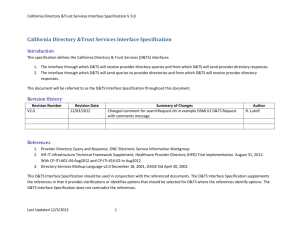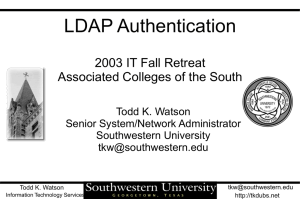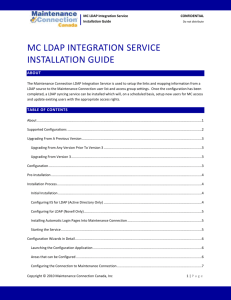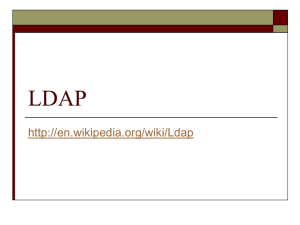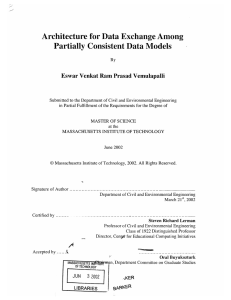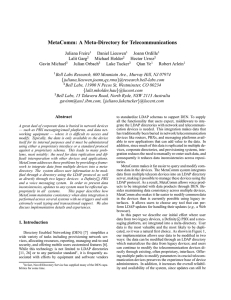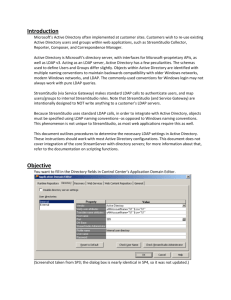Indiana University – University Information Systems
advertisement
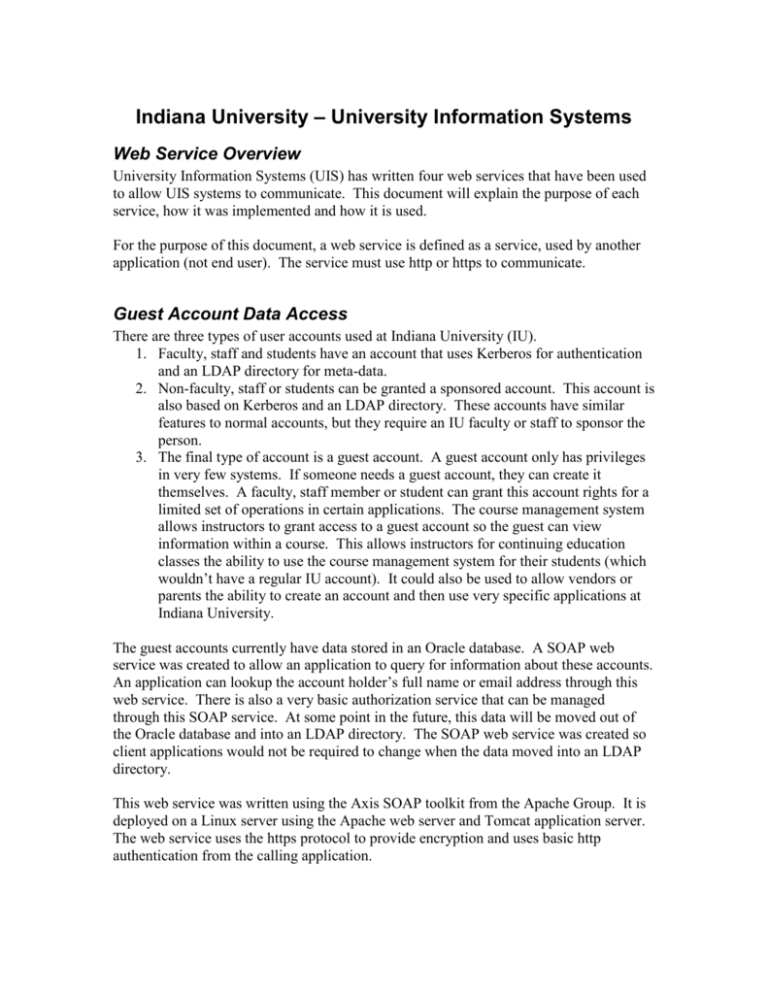
Indiana University – University Information Systems Web Service Overview University Information Systems (UIS) has written four web services that have been used to allow UIS systems to communicate. This document will explain the purpose of each service, how it was implemented and how it is used. For the purpose of this document, a web service is defined as a service, used by another application (not end user). The service must use http or https to communicate. Guest Account Data Access There are three types of user accounts used at Indiana University (IU). 1. Faculty, staff and students have an account that uses Kerberos for authentication and an LDAP directory for meta-data. 2. Non-faculty, staff or students can be granted a sponsored account. This account is also based on Kerberos and an LDAP directory. These accounts have similar features to normal accounts, but they require an IU faculty or staff to sponsor the person. 3. The final type of account is a guest account. A guest account only has privileges in very few systems. If someone needs a guest account, they can create it themselves. A faculty, staff member or student can grant this account rights for a limited set of operations in certain applications. The course management system allows instructors to grant access to a guest account so the guest can view information within a course. This allows instructors for continuing education classes the ability to use the course management system for their students (which wouldn’t have a regular IU account). It could also be used to allow vendors or parents the ability to create an account and then use very specific applications at Indiana University. The guest accounts currently have data stored in an Oracle database. A SOAP web service was created to allow an application to query for information about these accounts. An application can lookup the account holder’s full name or email address through this web service. There is also a very basic authorization service that can be managed through this SOAP service. At some point in the future, this data will be moved out of the Oracle database and into an LDAP directory. The SOAP web service was created so client applications would not be required to change when the data moved into an LDAP directory. This web service was written using the Axis SOAP toolkit from the Apache Group. It is deployed on a Linux server using the Apache web server and Tomcat application server. The web service uses the https protocol to provide encryption and uses basic http authentication from the calling application. Active Directory Group Access IU uses the Microsoft active directory (ADS) as a repository of group authorization information. ADS groups are created to control access within applications. The application can query ADS to determine group membership. Java can access ADS directory via its LDAP interface; however there is a bug with the IBM 1.3.x JDK that causes access to LDAP directories to be extremely slow. The workaround to this bug was to build a web service that can query ADS groups. Applications on our AIX application servers can call the web service instead of communicating directly with LDAP. The web service runs on Linux and uses the Sun 1.4.x JDK which does not have the bug. The web service has a proprietary interface instead of using SOAP. SOAP was considered to be too large and slow for this simple service. The calling application does an https GET to the web service. This GET contains all of the parameters required for the service to perform the query. The results are sent back to the client application as text. This allows calling the web service and receiving results to happen without parsing XML. Enterprise Directory Service Access All of the information about faculty, staff and students is stored in an LDAP directory at IU. This directory is called the Enterprise Directory Service. Applications can query this LDAP directory to look up information about a person. Unfortunately, there was a bug in the IBM 1.3.x JDK that made these LDAP queries very slow. UIS created a web service to query this data. The web service runs on a Linux box and uses the Sun 1.4.x JDK, which does not have the LDAP access bug. This web service also has a proprietary interface. The calling application does an https GET with all required parameters provided. The web service does the required queries and returns a serialized Java object to the client. The client application unserializes the object which has all of the necessary information. This method was chosen because the data returned was complex so a text representation would have been difficult to parse. We also didn’t want to parse XML which would require quite a bit of CPU overhead. This web service is very specific to Java. Applications that do not use Java cannot use this web service. If there is a business need, we could change the web service to allow the client to specify the format for the returned data. This way, the web service could provide serialized Java objects to Java applications and XML to non-Java applications. Student Class Schedule The portal calendar system needs access to student class schedules. This data shouldn’t be replicated into the calendar system, so a web service was created that allows the portal calendar to query the course management system for class schedules. In this case, the portal calendar system is a Java application and the course management system (CMS) is an Active Server Pages (ASP) application. A web service was chosen to provide this integration. Again, we chose not to use SOAP, but to use a proprietary interface. The portal calendar system makes an https GET request to the CMS. The CMS responds with an XML document that describes the class times and other information needed for a student’s calendar. XML was used allow the ASP application to communicate with Java. There is overhead parsing the XML, but the data was complex so it was decided that the overhead was acceptable. Conclusion UIS has been very successful with its use of web services. We will not hesitate to use them in the future. We have leaned toward using proprietary interfaces for internal web services and will probably continue to do so in the future. For web services that are external to UIS, a standard such as SOAP will probably be our direction.





